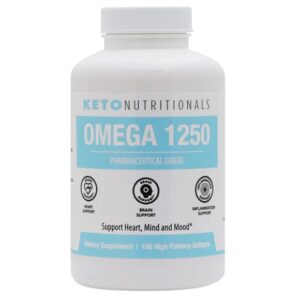

My daughter (The Swordfighter) just got married. Her fiancée, now husband, an amazing you man, made the wedding cake. Yes, on my daughter’s wedding, I had some cake . . . It was delicious! He made it with flour that he ground himself. That got me thinking about all the food additives that we avoided at her wedding.
For example, BHT (Butylated Hydroxytoluene) is used to extend shelf life, especially in processed food and cereals such as Cap’n Crunch, Apple Jacks, and Froot Loops. It is classified as a possible human carcinogen by the International Agency for Research on Cancer (IARC) and has been associated with hormone disruption and potential reproductive harm. BHT is incorporated either directly into the cereal or through packaging liners, which can transfer it into the food.
BHA (Butylated Hydroxyanisole) is a chemical similar to BHT, sometimes present in cereals, though it is more often used for preserving meats. It is classified as possibly carcinogenic and has been linked to hormone disruption.
Avoid both of these. They won’t help you at all.
Artificial Food Dyes
Artificial food dyes, such as Red 40, Yellow 5, Yellow 6, and Blue 1, are commonly used in breakfast cereals and snack foods to enhance their visual appeal, particularly for children. Some dyes, such as Red 40 and Yellow 5, are banned in children’s foods in the European Union due to links to hyperactivity and other health concerns, but remain legal in the United States. Under President Trump, the use of these dyes is being restricted; however, the ban on these dyes will not take effect until the end of 2026.
However, knowledge is power, and you can stop eating them and giving them you your children now.
Pesticide Contaminants
Cereal grains are also a significant source of pesticide contaminants, including glyphosate, which is linked to a whole cornucopia of diseases. We all know that glyphosate and other herbicides are sprayed on almost all of our commercial grains, legumes and seed oil crops to kill the plants all at once, thus making the processing much easier. These desiccants, as they are called, are found in trace amounts in our commercial grains and seed oils as well as legumes. That means in our breads, flours, crackers, cookies, cakes and snack foods that are not labelled organic will contain glyphosate or another herbicide. You know, pretty much all of the food found on the inside aisles of our grocery stores.
A March 2023 paper found in the peer reviewed journal Plants measured the amounts of glyphosate residues found in grains that had been treated with glyphosate as a “pre-harvest” (desiccant) in Central Lithuania (1). The study found that glyphosate residues were found in higher concentrations in wheat bran and oilseed rape meal and that these residues could be found a year after harvest.
A study in Canada found 30% of food samples in Canada contained glyphosate.
These results correlate with another recent study out of Canada (Jan 2023), whereby the urine of pregnant women in their first trimester were tested for glyphosate and AMPA (the metabolite of glyphosate). Nearly 75% of women had detectable concentrations of glyphosate and AMPA in their urine. The study authors observed a dose-response relationship between consumption of whole grain bread and higher urinary glyphosate concentrations. This is not only worrying, it is unacceptable!
Another March 2023 peer reviewed study was published in Birth Defects which demonstrates that mice fed glyphosate throughout the pregnancy had babies that had significant behavioral abnormalities, as well as neuroinflammation. Behavior behavioral changes of the baby mice included anxiety and hyperactivity. Furthermore, the mouse brains had detectable neuroinflammation soon after birth.
A 2023 PNAS paper clearly demonstrates neuroinflammation is involved in Austism (ASD) in humans. Yet another 2023 paper makes the case for the involvement of neuroinflammation in Attention deficit hyperactivity disorder (ADHD). (1, 2).
The neuroinflammation from these glyphosates with the presence of aluminum in vaccines makes the cause of autism and ADHD much more understandable.
Potassium Bromate
Then there is potassium bromate in bread, which some commercial bakeries use to produce bread with a higher rise and firmer texture. It helps the dough hold gas during proofing and creates a uniform crumb and white color. Perfect for mass production!
Potassium bromate is classified as a possible human carcinogen (Group 2B) by the International Agency for Research on Cancer (IARC). Animal studies have linked it to kidney and thyroid tumors. The concern is that bromate residues can remain in finished bread if baking temperatures or times are inadequate to convert it to non-toxic bromide fully.
Potassium bromate addition to food is banned or restricted in the EU, UK, Canada, Brazil, China, Japan, and many other countries, but is still allowed to be used in the USA. So, this is another ingredient to check out when reading food labels. Specifically look for “potassium bromate” or “bromated flour.
If you are going to use bread, the bake you own bread with organic flour or even better, grind you own wheat, avoid all boxed breakfast cereals. I consider this a fundamental part of homesteading – the art and science of living in our home rather than outside it.
This is why we all need to get back to traditional, whole foods and stay away from flour, and basically ALL refined carbohydrates – just like our ancestors ate. Cause those carbs are killing us – literally.
To Your Health & Longevity,
Adam Nally, DO
References:
1. Proc Natl Acad Sci U S A, 2023 Mar 7;120(10):e2206758120. doi: 10.1073/pnas.2206758120.Epub 2023 Mar 2.;
2. Adv Exp Med Biol 2023;1411:327-356. doi: 10.1007/978-981-19-7376-5_15.
Dr Nally’s Recommended Omega 3 Supplement
Adam Nally
President/CEO
DocMuscles
DrNally@DocMuscles.com
(623) 584-7805 – Work
www.DocMuscles.com
Leave a Reply